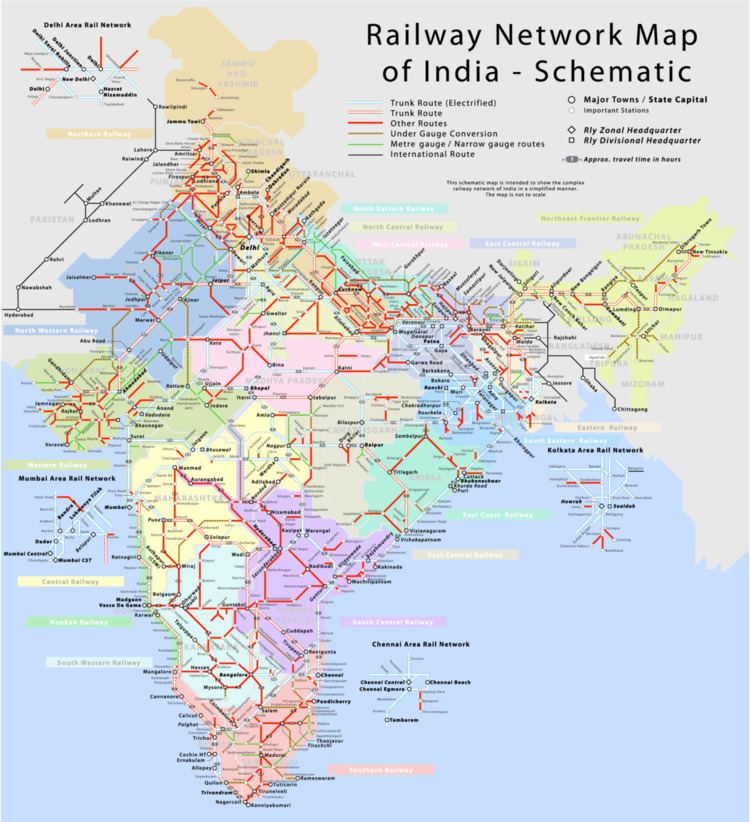 | ||
The Indian Railways is organised broadly by functional groups of Indian Railway Service. This is traditionally how the co-operation is organised. The Indian Railways perhaps has been less adventurous in changing the structure; it has largely kept up what it got as a legacy since the British era.
Contents
Railway Board
The apex management organisation is the Railway Board, also called the Ministry of Railways. The board is headed by a Chairman who reports to the Minister of Railways. The board has five other members in addition to the chairman.
The General Managers of the zonal railways and the production units report to the board.
Functional branches
The various Group A cadres are as below:
Non Technical Services recruitment through Civil Services Examination conducted by UPSC
Technical Services recruitment through Indian Engineering Services Examination conducted by UPSC
Medical Services recruitment through Combined medical Examination conducted by UPSC
India's vast rail system, the third largest in the world, is managed by regional levels. Indian Railways has divided itself into seventeen zonal railways. Each zone, headed by a General Manager, is semi-autonomous and this creates a matrix organisation where the functional branches are under dual control viz.
Zonal management
The current 18 zones of the Indian Railways are
Divisional organisation
The Divisional Railway Manager (DRM) heads the organisation at the division level. There are currently 71 divisions on the system nationwide. The divisions are primarily involved with train running but may have loco sheds (repair shops for locomotives), coaching depots (repair home bases for passenger trains) and wagon depots (repair and maintenance points for freight stock).
Each division has all the functional (both line and staff) organisations. The heads of these functional groups report to the DRM for administrative purposes but rely on guidance from the railway board and the zonal headquarters for policy guidelines.
